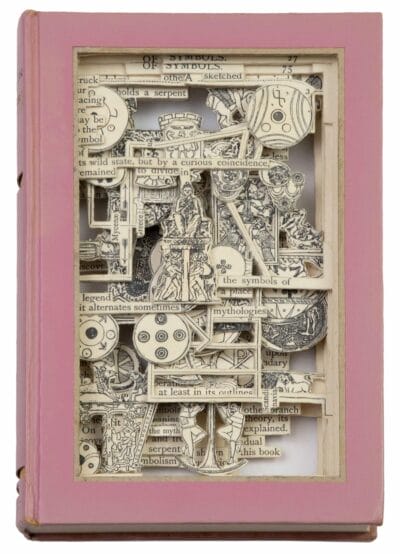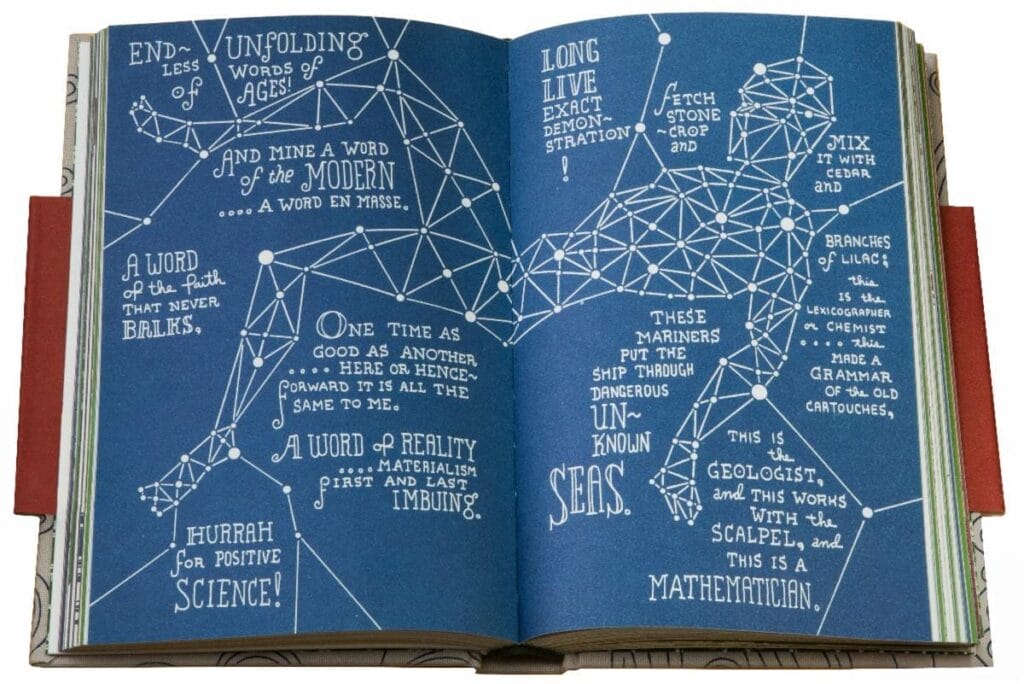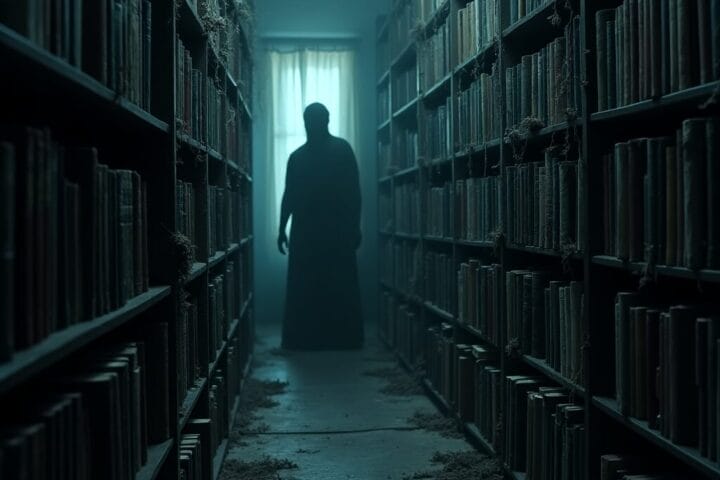NEW YORK CITY – A new exhibition of contemporary artists’ books at the Grolier Club celebrates hundreds of years of communication through real and imagined languages. On view from February 29 through May 11, 2024 in the Club’s second floor gallery, Language, Decipherment, and Translation – from Then to Now presents a kaleidoscopic presentation of more than 50 books, collages, prints, and scrolls that feature hieroglyphics, translations of classic folktales, and other forms of written and visual language.
Curated by Grolier Club member Deirdre Lawrence—who was inspired in part by the recent 200th anniversary of the decipherment of the Rosetta Stone (1822)—the exhibition features many intricately detailed artists’ books by visionary contemporary artists. “Drawn primarily from my personal collection of approximately 2,000 books and prints, and growing, this exhibition reflects my collecting interests spanning the ancient world, especially Egypt; the work of Walt Whitman, who was himself enthralled by Ancient Egypt; the history of art, especially photography; and books made by contemporary artists,” said Lawrence.
Exhibition Highlights

The exhibition begins with a prelude of historical books documenting early attempts to decipher Egyptian hieroglyphics. Among the works on view are an 1842 study by French linguist Jean-François Champollion, who in 1822 deciphered the Rosetta Stone’s Egyptian and Greek texts to unlock modern understanding of hieroglyphics, and an 1858 copy of a drawing of the Stone in the British Museum by Charles Reuben Hale, one of the authors of the first published English translation of the Rosetta Stone.
The exhibition then makes a seismic leap to current times, showcasing more than 40 contemporary artists’ books from 1984-2023 that explore themes related to language, decipherment, and translation through forms of communication including erasure and signs and symbols. Works on view feature inventive imagery, typography, design, printing, and bindings, such as the laser cut Arabic calligraphy in Islam Mahmoud Mohamed Aly’s Marginalia 1 (2013) that appears burned into the pages. In The Flight into Egypt: The Third Magnitude (2009-2010), artist Timothy C. Ely depicts a fantastical world of floating pyramids, topographic maps, and scrolls with his own personal writing system called “Cribriform.” Laura Davidson’s book Useful Knowledge (1998) has hand-colored Linoleum prints inspired by an Italian book she found with patterns, letter forms, and text blocks that have deeply influenced her artmaking for decades.
Unique sculpted books on view include Brian Dettmer’s The Migration of Symbols (2014), an intervention of a 1956 edition of Count Goblet d’Alviella’s 1894 book of the same title, which the artist has transformed through intricate cuts, in what he calls “an archeological excavation, exposing a dense cluster of fragmented symbols and ideas.” José Maria Sicilia’s Le Livre des Mille Nuits et Une Nuit (2015) is an intervention of a 1910 edition of The 1001 Nights incorporating lithography, photogravure, woodcuts, and embroidery. Colorful embroidery stitches spread across the pages in patterns inspired by the artist’s research into the visual rendering of sound.

History and storytelling connect other works, such as Sabra Moore’s Reconstruction Project (1984), a collaborative artists’ book that resembles a Mayan codex, which was inspired by the 1566 work Yucatan Before and After the Conquest by Friar Diego de Landa with imagery of the Dresden and Madrid codices. Didier Mutel’s La Pierre Rosette (2015) is printed at a 1:1 scale with its ancient precursor and contains three original alphabets designed by Mutel, which the artist has described as “a typographic transposition, or pastiche of letterforms.” Joydeb and Moyna Chitrakar’s painted scroll Tsunami (2019) commemorates the 2004 earthquake and tsunami in the Indian Ocean that killed more than 230,000 people. Thought to be the first Patua scroll in book form, it is a fable on narrative graphic panels, stitched together to form a scroll.
Also on view are works that reflect Walt Whitman’s influence on contemporary artists, including Allen Crawford’s Whitman Illuminated: Song of Myself (2014), a contemporary illuminated manuscript that captures the poet’s words and sensibility through hand-drawn images and verse that freely flow on vibrant blue pages; and Meg Hitchcock’s Chanting the Square Deific (2014), a maze-like collage reconstructing a poem by Whitman with letters cut from an old German Bible.
Programming
The Grolier Club will host related free public programs, including lunchtime exhibition tours on March 8 and April 5, from 1:00 – 2:00 PM. A lecture by artist Didier Mutel will occur on April 9, 6:00 – 7:00 PM; an Artists’ Keynote Lecture is planned on April 29, time TBA; and a Virtual Exhibition Tour and Curator Q&A will take place on May 2, 6:00 – 7:30 PM. More details can be found at http://grolierclub.eventbrite.com.











